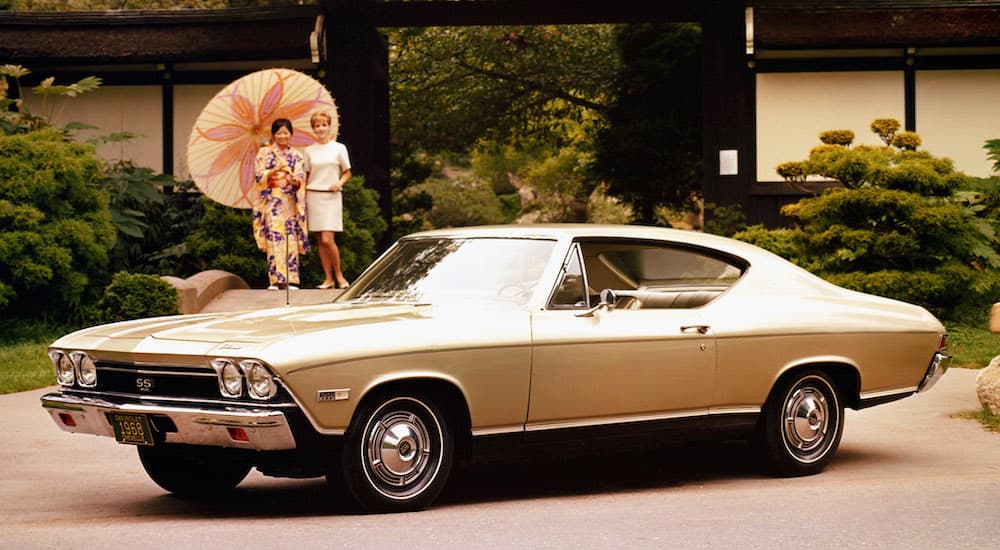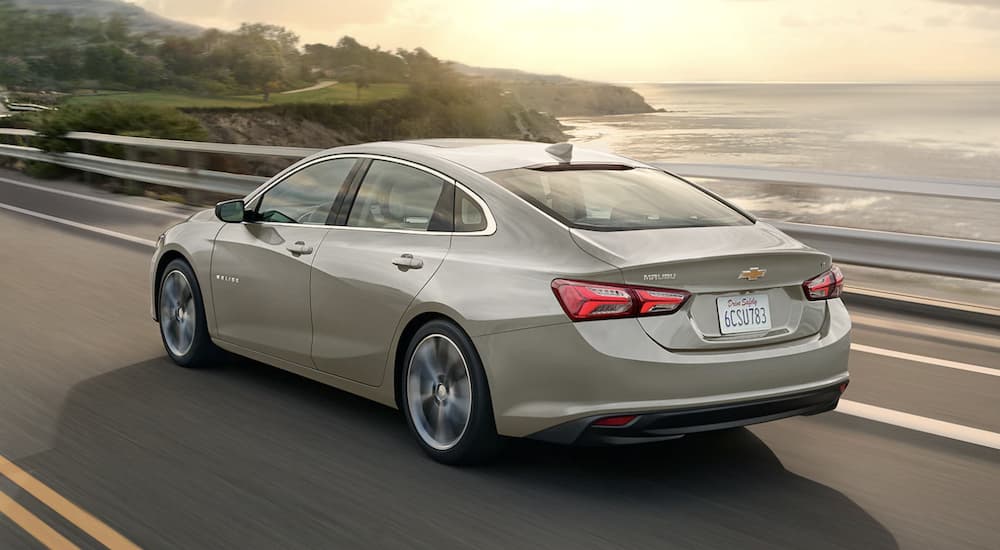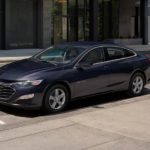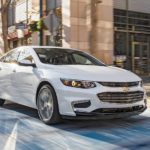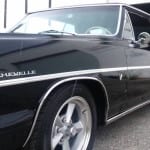Sometimes success is a double-edged sword. Very few manufacturers are held in as high regard as Chevy, and when you think of Chevy’s current lineup, you may not bat an eye at the history of each model—but every story has a beginning. Many do not realize this or have not known, but when you see a Chevy Malibu for sale, it’s not the same type of Malibu it used to be.
The Chevy Malibu is a historic vehicle nestled firmly into the lineup of a historic manufacturer, but there was a lengthy hiatus between the Malibu models of old and the ones you find on the lot today, like the 2023 model. I’ll be going over the history of Malibu from its inception in the flower power era of the 1960s to where we stand now in the modern age of fuel-efficient and technologically capable automobiles. It may sound cliche to some, but we must go backward before we move forward, so let’s take a deeper look into the foundation of the Chevy Malibu.
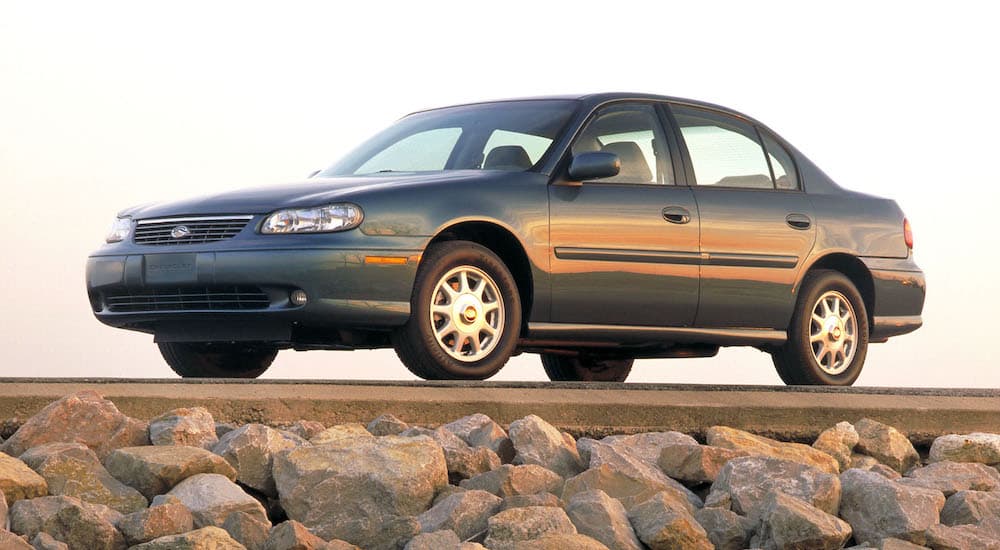
Once Upon a Time
Think back to a time when color television had yet to be widely adopted—a time when rock and roll took its most drastic leap into the cultural mainstream with the likes of The Beatles, The Monkees, and The Rolling Stones: the 1960s. However, I’m not here to reminisce about the 1960s with you; that’s your old uncle’s job. The 1960s were a time for experimentation, and I’m not talking about the people.
Chevy had been around for over fifty years by the 1960s, but the automotive industry was still rapidly shifting. A decade prior, family-friendly automobiles began flooding the streets, and one decade before that, Chevy had their hands full assisting the US military in World War II. I’m getting ahead of myself—but you should know that Chevy wanted to create a vehicle smaller than the ones within the lineup it possessed, but also one that would continue the trend of suburban-friendly automobiles in an ever-booming industry. As such, the Chevy Chevelle was born.
The Chevy Chevelle may not ring a bell, and understandably so, as the Chevelle’s namesake was dropped in the late ’70s in favor of retaining the Malibu branding. So are the Malibu and Chevelle the same thing? Yes and no. The Malibu was a higher-end model of the Chevelle, much like how we have trim levels on current automobiles.
The Chevelle, and by extension the Malibu, offered tremendous performance for its time, and Chevelle Malibu models are of a certain vintage now. This is because the Chevelle was formally discontinued in 1977, but all of the work hadn’t been lost; most of the work simply shifted over to the Malibu. This included over a decade of enhancements, and the Chevelle was no longer available as a convertible or hardtop, but the Malibu variant was. Once the name Chevelle was retired, it was never used again.
The Chevelle name left behind a legacy that may not ring a bell to the newer generations, but it certainly does with the older ones. The first proper Malibu model featured a 3.3-L I-4 engine with a lowly net 95 hp and 160 lb-ft of torque, and it was paired to a 3-speed automatic transmission. Keep in mind this was the 1970s, so while it may nowadays seem tame, it got the job done. The performance of the time is certainly a far cry from the 163 hp and 184 lb-ft of torque derived from the standard turbocharged 1.5L I-4 engine in the 2023 Malibu, which comes paired with a Continuously Variable Automatic Transmission—something that didn’t exist at the time of the 1978 Malibu.
Not So Fast
As I’ve established, the Chevelle was dropped in favor of using the Malibu’s namesake going forward. And go forward they did—for only half a decade longer. The Malibu became a different machine than what it originally was, and by 1983, it no longer was about top-notch performance and was more focused on being a dialed-back family vehicle like Chevy had originally set out to engineer.
However, in 1983, Chevy pulled the plug on the Malibu, and the industry shifted away from station wagons in favor of more sleek-looking automobiles like sedans—and later, SUVs. Time moved on, and in many ways, plenty of customers did too. The Malibu became nothing more than a distant memory for over a decade and a half. However, the story isn’t so bleak, and I’ll explain why.
A Second Chance
The automotive market changes more often than we think. The automotive market today is different from the one from ten years ago, while the market from ten years ago is vastly different from the one that preceded it. Although the industry had shifted in more ways than one, Chevy never forgot about the Malibu.
In 1997, the Malibu made a surprise return featuring a whole new look and a bag of new tricks. Whereas the 1983 Malibu used a 3.8-L I-4 with a net 110 hp and 190 lb-ft of torque—rather low-powered for its time, despite being an improvement over the first exclusively named Malibu models—the 1997 Malibu brought a more fuel-efficient 2.4-L I-4 engine with 150 hp and 155 lb-ft of torque. It was economical thanks to a smaller and less fuel-hungry engine, and yet featured more horsepower. Add to that a complete redesign of the chassis, and this was truly a “next-generation” Malibu.
The return of the Malibu was a momentous occasion, and the new-and-improved sedan made sense in the overall picture of Chevy’s lineup by that point, which was sorely lacking in sedans. Chevy’s foray into SUVs is partly the cause, but Chevy also committed to developing more fan favorites like the Camaro sports car and the Silverado pickup truck.
The Malibu serves as Chevy’s only sedan currently in production, and since its return in 1997, Chevy hasn’t pulled the plug again. The Malibu serves as a crucial piece in Chevy’s lineup right now because Chevy puts a tremendous amount of care and effort into it, and it’s fairly priced, which is important for the demographic it’s targeting, such as commuters and other daily drivers. Upon the Malibu’s return, it picked up where its predecessor left off, meaning its triumphant return embarked the fifth generation of the Malibu, and we’re currently on the ninth-generation Malibu; the tenth generation is likely around the corner. There’s no stopping the Malibu, and if there’s one word to describe the Malibu, it’s ‘evolution.’
The Chevy Malibu started more akin to a muscle car, and later models would then warp that into a station wagon, which was quite popular in the 1970s. The sedan style of the Malibu that hit the market in 1997 is far more what we’re all used to nowadays, but in comparison to models that were released in the eighth and ninth generations, they look quite tame. Malibu models are unmistakably Chevy, and with the sleek and slightly-angled hood design of modern-day Malibus, Chevy has managed to blend that familiar family-friendly style with the lavish and thrill-seeking design of its first incarnations.
The Story Doesn’t End There
Chevy is a manufacturer that truly cares—not just for its customers, but for the products it develops and ships off to dealership lots. The Malibu may have had an interesting history with its hiatus that lasted nearly two decades, but it was the best thing for the Malibu—because the chances are, the Malibu wouldn’t have remained competitive in its original form. Hence, Chevy decided to shelf it until they shifted business strategies and the market was more favorable toward the introduction of a Chevy sedan. The familiar name was the cherry on top.
